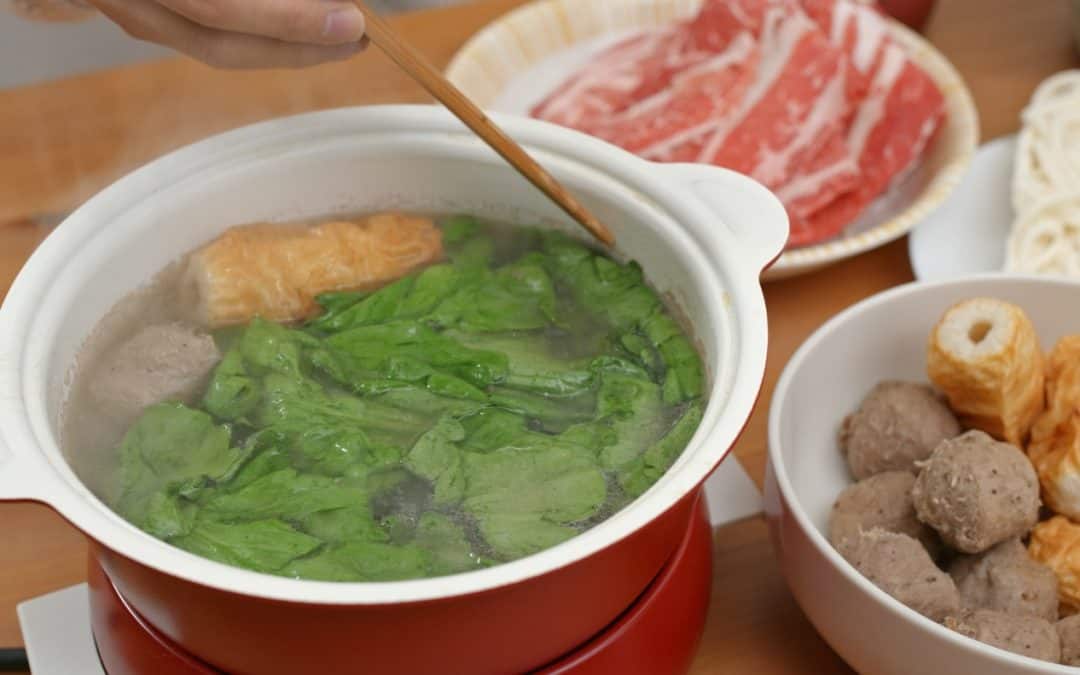Boiling is one of the most basic methods of cooking vegetables and for most people should be used at least once daily. Boiling is very versatile and, depending on the method, can take a short time or a long time and can create quick energy or slow, steady energy. When boiling, use only 1/4 inch of water in the pot. If cooking a lot of ingredients, add enough water to come up about halfway. It is not necessary to fill the pot with water and submerge the vegetables completely.
Ohitashi Style Boiling
Ohitashi means “dipping” the vegetables in boiling water and is similar to blanching. Ohitashi is recommended for cooking leafy greens. Put 1 inch of water in a pot and bring to a strong boil. Dip the greens in the boiling water for about 15 – 60 seconds and take them out quickly. Root vegetables, if sliced very thinly, can also be cooked in this way, for a slightly longer time. Ohitashi makes for vegetables with fresh deep colors and a nice crispy taste.
Nishime Style Boiling
Vegetables prepared in this style are cut in large sizes and are cooked slowly for a long time over low heat. The steam in the pot allows the ingredients to cook in their own juices, so little water is usually needed. Seasoning may or may not be added in the beginning. When done, the vegetables are very juicy and are often served together with their cooking liquid. Nishime style cooking produces very strong, calm energy. Nishime style vegetables are warming and often given to sick people to restore their vitality as well as enjoyed by those in good health.
Kinpira Style Boiling
Kinpira style is a combination of sautéing and then boiling and is similar to braising. It is used primarily in cooking root vegetables. First, the root vegetables are sliced thinly and sautéed with oil for 2-3 minutes. (Oil may be omitted for those who need to avoid oil). Then water is added to half cover the vegetables or lightly cover the bottom of the pan. The vegetables are cooked with a cover until they are 80% done. Then, Tamari soy sauce is added to taste, the frying pan is recovered, and the vegetables are cooked for another 2 to 3 minutes. Finally, the cover is removed, and the excess liquid is cooked off. Arameh and Higiki sea vegetables are frequently cooked in this way along with carrots, onions, tempeh, and tofu.

